Like any pool heat pump, a Gulfstream pool heater lets you get more out of your pool season. It gives you the heat you need when the sun wants to hide. And it heats your pool at an affordable cost. Which means you get to keep your pool open and stay warm while everyone else closes theirs.
But just like any pool heater, a Gulfstream pool heat pump will eventually need a little TLC to keep going strong. Over time, you might notice that it doesn’t heat the way it used to, or that it starts shutting off at random times.
If you’re dealing with a few Gulfstream pool heater problems, then the first thing you’re probably wondering is what’s causing them. You want to get down to the source so you can fix your pool heat pump as soon as possible.
That’s when pool heater troubleshooting becomes your next best step. It helps you figure out exactly what’s going on with your pool heater, so you can get it back in tip-top shape.
So if you’re currently experiencing a few Gulfstream heat pump problems keep reading. In this post, we share 5 troubleshooting tips for Gulfstream pool heaters that’ll save you time, money, and a whole lot of head scratching.
5 Troubleshooting Tips For Gulfstream Pool Heaters
1.) Keep your filter clean to avoid slow heating
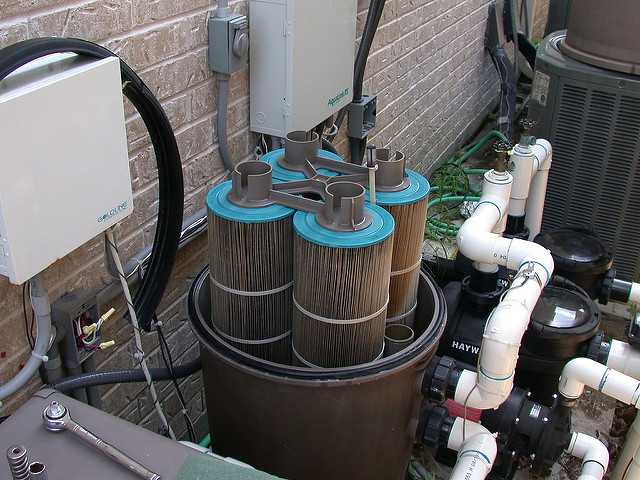


If you notice your heat pump suddenly doesn’t heat the way it used to, don’t worry. There a few reasons why that could be happening.
One of the most common reasons for heating performance to degrade is a dirty filter. An unclean filter not only dirties your water but also has a major effect on circulation.
Think about it, the more clogged your filter is, the harder it is for water to pass through. And the harder it is for water to flow, the slower it circulates, and the longer it takes for heat to distribute.
On your Gulfstream pool heat pump’s display, you might see the message “Low Flow” pop up, which indicates exactly what you would think: low water flow.
To troubleshoot this:
- Clean out your filter completely, replacing any filter media that is beyond cleaning
- If this solves the problem, then you’re good to go.
- If not, you may have water flow issues elsewhere in your pool system (See tip #5)
2.) Clear out the metal vents for the best heating efficiency
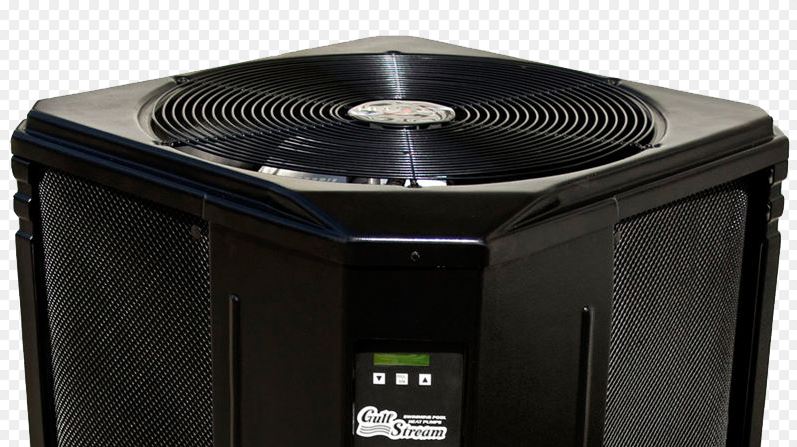


A Gulfstream pool heat pump sources heat from the ambient air surrounding it. As the pump runs, it uses the fan to pull in warm air through the evaporator coil. The evaporator coil is hidden just behind the metal vents on the side of the unit. This is the part that starts the heating process for a pool heat pump.
As long as the vents are kept clear, air will flow through with ease, which means optimal heating efficiency.
But, if you’ve had your Gulfstream heat pump for awhile, then you’ve probably noticed these vents have a tendency to get stuff lodged in them. From leaves and twigs to blades of grass and whatever obscure debris happens to blow in your heat pump’s direction.
When the vents get clogged, you heat pumps ability to pull in air suffers. This results in a drop in energy efficiency, which makes your pump work harder than it should.
For the best heating efficiency: Always keep your heat pump’s side vents debris free, and clear of any twigs leaves or other shit that finds it’s way in there.
Related: When To Service Your Pool Heat Pump
3.) Power down the heat pump to find the source of a leak
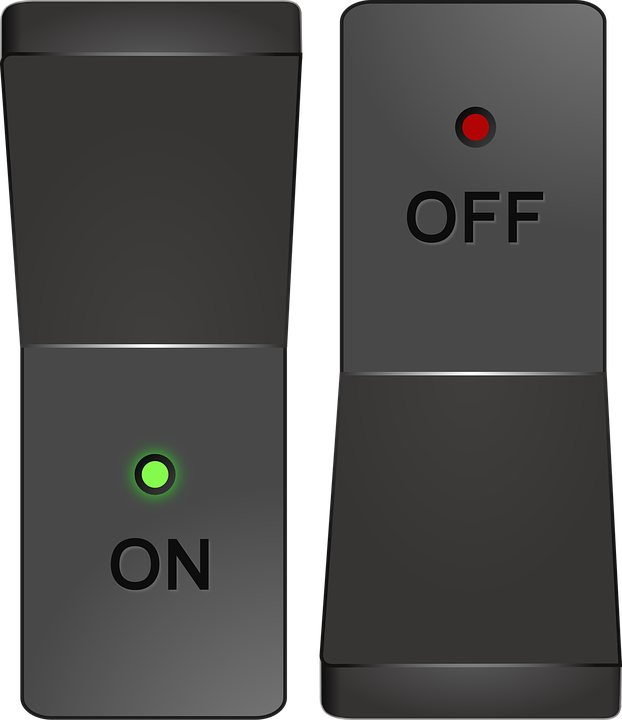


Have you ever walked outside and noticed a huge puddle forming under your heater?
Your first thought might have been “Oh crap, my pool heat pump has a leak. What do I do?”
But here’s the thing: Your pool heat pump probably wasn’t leaking, it was sweating
Since pool heat pumps are constantly dealing with contrasting temperatures, they produce condensation. Or in other words, sweat. And sometimes, they sweat a lot.
That said, it’s not impossible for your pool heat pump to spring an actual leak either. It happens every now and then. Which is why the best thing to do when you see a leak, is to start testing.
To find the source of a leak:
- Power down your pool heat pump, and leave your filter pump running
- This allows water to flow through the heater without being heated.
- If after a few hours, the puddle disappears, then your pump was just sweating
- If the puddle remains even with the heat pump off, you might have a leak
- Test the water puddle for chlorine content
- If the water tests positive for chlorine, then you have an internal leak and should seek heat pump service
- If the water tests negative for chlorine, then it’s condensation, and just needs a little more time to evaporate
- Test the water puddle for chlorine content
4.) Reset your breaker to find the cause of power issues
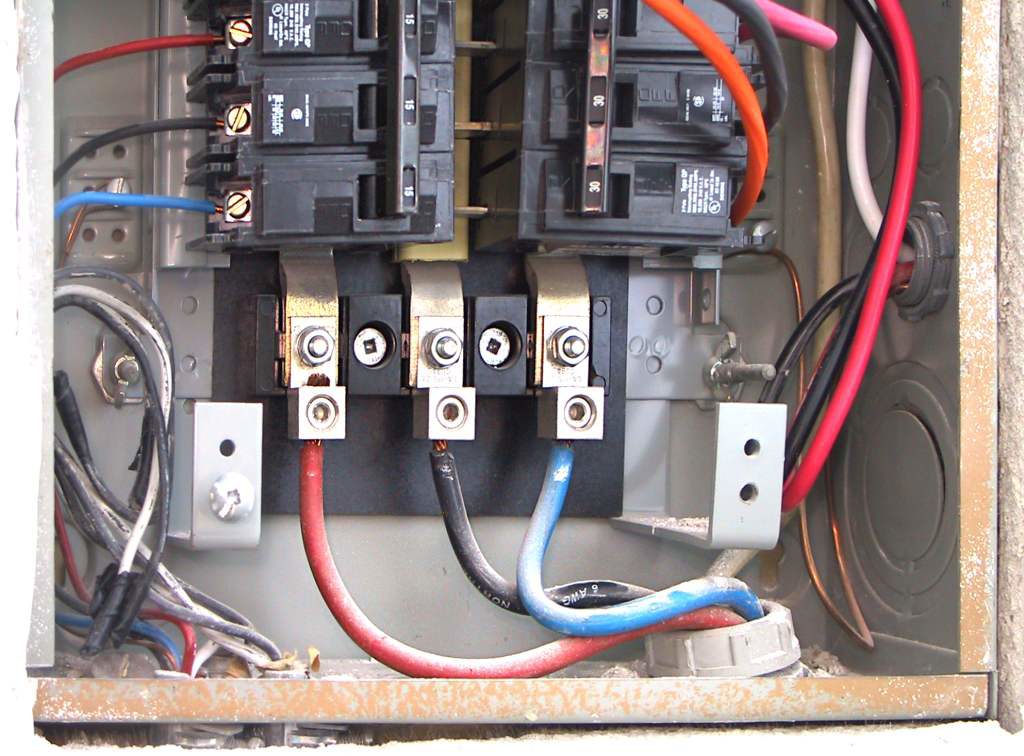


If your Gulfstream pool heat pump keeps turning off and on or won’t turn on at all, then chances are you’re dealing with a power issue.
That said, a lack of water flow can also cause your heat pump do a safety auto-shutdown to avoid overheating. But as long as you’ve confirmed that the heater is getting plenty of water, then the issue is likely related to power.
Here’s what to do:
- Reset your breaker, then check if the pump powers on
- Sometimes, a quick overload can cause a breaker to trip.
- If your pump turns on and stays on after resetting the breaker, you’re good.
- Otherwise, walk over and inspect the electrical connection for damage
- Are there any damaged wires? Corroded electrical connections?
- If so, call for heat pump service to safely troubleshoot and rewire your heater.
- Although rare, a malfunctioning circuit board can also cause power issues for your heat pump
- Before you go and replace the board, consult a pool heat pump technician to determine whether or not the board is the issue
Related: Pool Heater Won’t Turn On? Here’s What To Do
5.) Maintain good circulation to avoid “Water Flow Lockout”
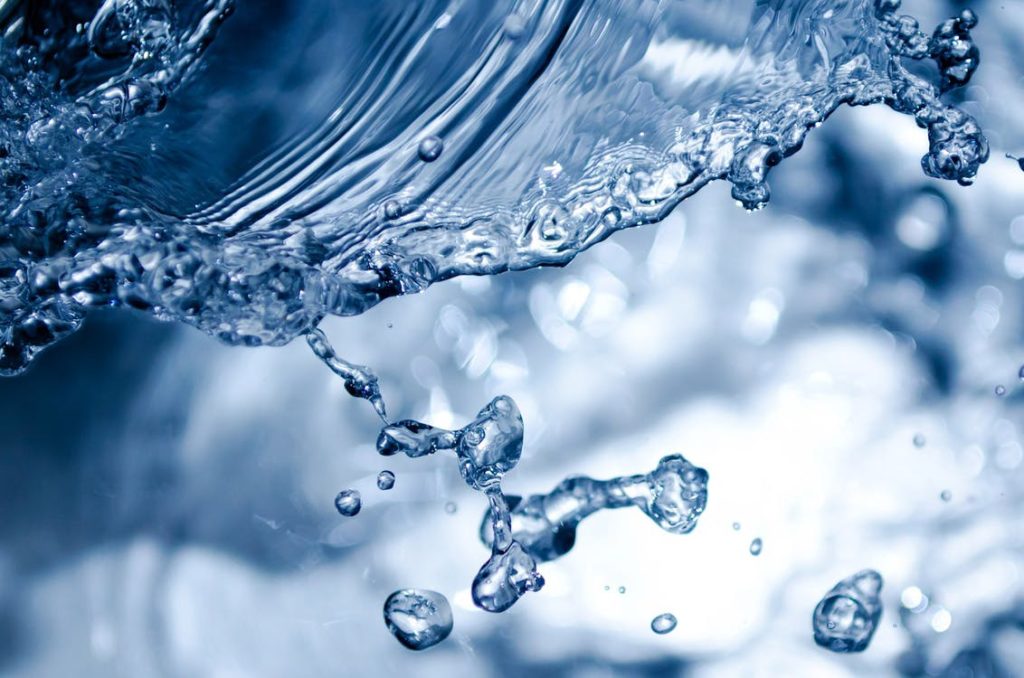


As you remember from earlier, a clogged filter can prevent your pump from heating efficiently.
But in more severe cases, a blockage in your pool system can also cause low water flow. And without enough water to distribute heat into, a pool heater can easily overheat and experience permanent damage.
If you see the “Water Flow Lockout” notification appear on your Gulfstream’s display, or notice the pump shutting down for non-electrical reasons, then chances are poor circulation is to blame.
Assuming you already cleaned your filter, start by checking all the other key filtration points around your pool.
This includes your pool pump’s basket, your skimmer basket, and your multiport valves.
To avoid water flow issues:
- Regularly check and empty out your pool pump’s basket to avoid clogging
- Empty out your skimmer basket for optimal water flow, and to skimmer backup, where all the bugs and leaves on the surface float right back into the water
- Check that your valves are all set to the OPEN position for the best flow possible
Closing thoughts on Gulfstream pool heater troubleshooting
Some of the best Gulfstream pool heater troubleshooting tips start with good maintenance. When you’re dealing with slow heating, the first place to check is the filtration system. Since water flow is essential to any pool heater, you’ll want to make sure your pool heat pump is never thirsty. Aside from that, remembering to do regular pool heat pump maintenance is key to maintaining the best performance. Keep your pool heater’s vents clear and the evaporator coil clean for the steady and reliable heating you expect.
If you liked this post, you might also like:
- 9 Ways Owning a Pool Heat Pump Improves Your Life & Your Health
- 7 Ways Heat Pump Swimming Pool Heaters Simplify Pool Heating
- 9 DIY Pool Heater Repair Tips

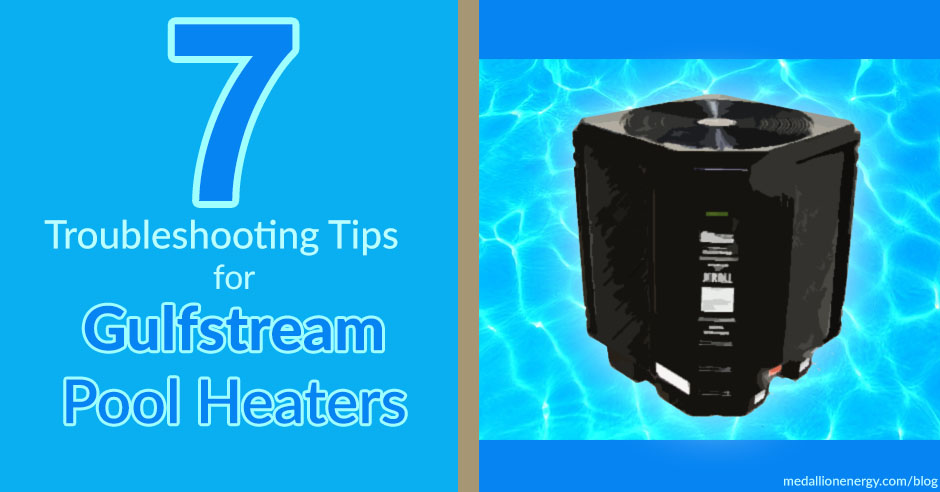

I’ve been looking for a good pool heater repair service, and I think that being able to get some information would be great for me. Im’ glad you talked about being able to reset your breaker, and I think that being able to do that would be smart. I’m going to have to look into a few different options, and see what we can find!
Glad you found the article to be helpful, Jordan. Feel free to send us a message (or call) with any specific questions you might have